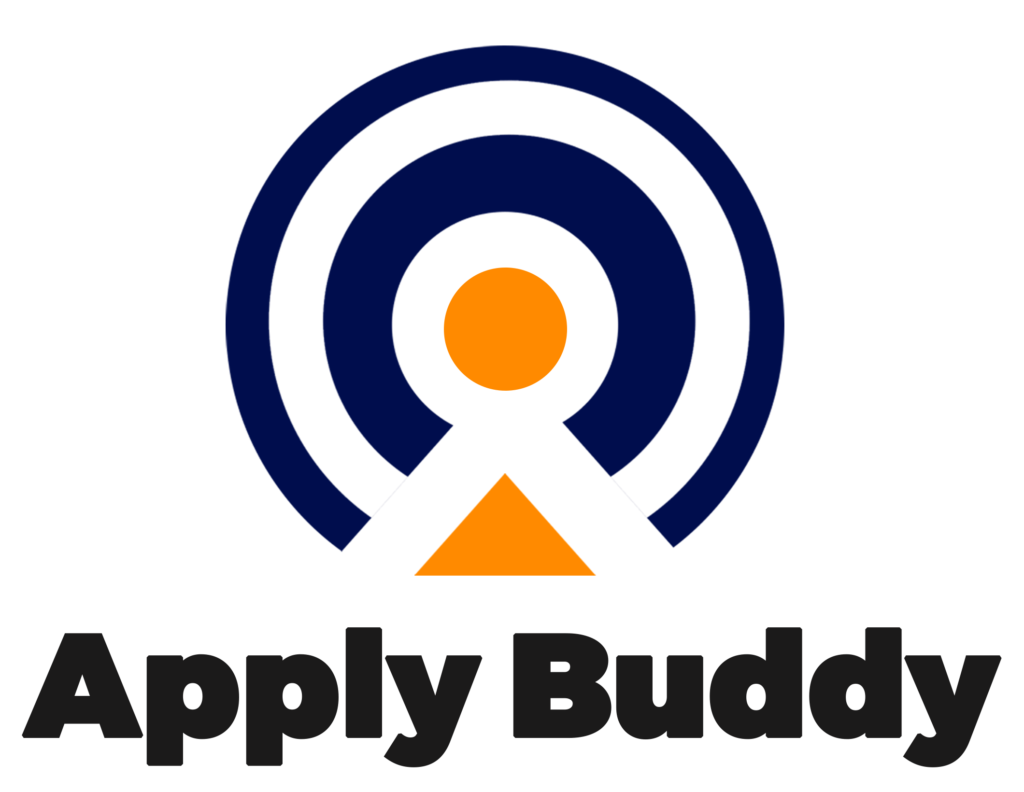Building a job-ready portfolio is one of the smartest things you can do to stand out in the ocean that is the job market. If you’ve ever asked yourself how to get noticed by employers fast, keep reading.
A great professional portfolio shows what you can do, not just what you say you can do. It brings your job search documents to life and gives you an edge.
And this works whether you’re fresh out of school, switching careers, or ready to go after your dream role.
In this guide, I’ll walk you through how to make a strong career portfolio that makes hiring managers say, “Let’s talk.”
Why a Job Ready Portfolio Matters
Let’s face it: getting hired isn’t just about sending a resume anymore. In today’s job market, building a job ready portfolio is your chance to go beyond the basics. Employers want proof that you can do the job. Not just talk about it.
56 % of hiring managers are more impressed by a personal website than any other personal branding tool.
That’s where your portfolio comes in. It helps you stand out and show real value. If your portfolio shows results, your optimised resume just became twice as powerful.
Let’s dive in and see why it matters.
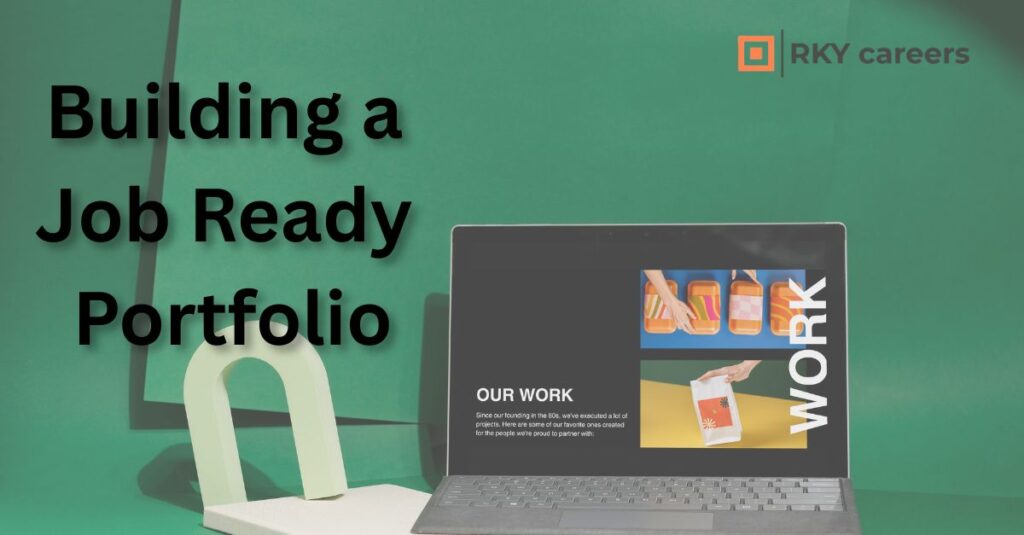
What employers look for in a portfolio
What exactly do hiring managers expect when reviewing a portfolio?
First off, they want to see proof of skill, not just a pretty design. Think of it like this: your portfolio should tell a story about what you’ve achieved and how you work. If you’re building a job ready portfolio, include outcomes.
For instance, showing job portfolio examples with measurable success instantly earns credibility. Employers also love to see diversity in your work. That doesn’t mean you need 20 projects. Even 3 to 5 well-documented, detailed pieces can do the trick.
Here’s the kicker: consistency and professionalism across all materials make a big impression. Spelling mistakes, disorganised sections, or unclear goals? Total turnoffs.
So, if you’re wondering what to focus on, remember that results speak louder than resumes.
Read also:
First impressions and standing out in a competitive job market
Here’s something we can both agree on: first impressions stick. Most employers form an opinion in less than 30 seconds. That’s why building a job-ready portfolio can give you the edge.
Think about this: your resume shows where you’ve been, but your portfolio shows where you’re going. You’re not just another applicant, but someone who brings ideas to life.
Your layout, tone, and style must align with the role you want.
If you want to stand out, customise your portfolio for job interview settings. Include tailored case studies, testimonials, and work samples specific to the company’s industry. That tells the hiring manager, “I did my homework.”
Your portfolio is often your first handshake with the employer. And a firm one can open doors before you even step into the room.
What to Include in a Job Ready Portfolio
Now let’s get to it: what goes into building a job ready portfolio that impresses?
First, think beyond just listing past roles. Your portfolio should act like a live demonstration of your value. You’ll want to include your best projects, your updated resume, certifications, testimonials, and a summary of your tools and technical and soft skills.
The key is balance. Not too much, not too little. Just the right mix that shows you’re capable and prepared.
Key projects and case studies
If you’re wondering how to make a lasting impression, here’s how:
- Focus on 3 to 5 strong pieces that highlight your capabilities. Each one should include context, your role, tools used, and most importantly, results. This is where you show, not tell.
- Include before-and-after scenarios or lessons learned. Your work should mirror what’s expected in the job you’re applying for.
- An entry-level job portfolio can feature school projects, volunteer work, or freelance gigs. Anything that proves you’ve applied skills in real situations.
Good job portfolio examples always include visuals or links to live work. The bottom line is, strong case studies show that you’ve done the work, and you’re ready for more.
Resume, certificates, and testimonials
You might be thinking, “Shouldn’t my resume stay separate?” Not at all.
Including it directly in your portfolio keeps things convenient and shows you’re thoughtful. Your resume should highlight your best achievements briefly. At the same time, your job search documents, like certificates and awards, add extra credibility.
Employers trust verified skills. When they see certifications listed, especially those tied to the role, it reassures them. And testimonials are the secret sauce.
A few lines from past mentors or clients can speak volumes. Imagine how powerful it sounds when someone else vouches for you. Just make sure they’re genuine. This blend of content proves you’re not only skilled but also respected by others.
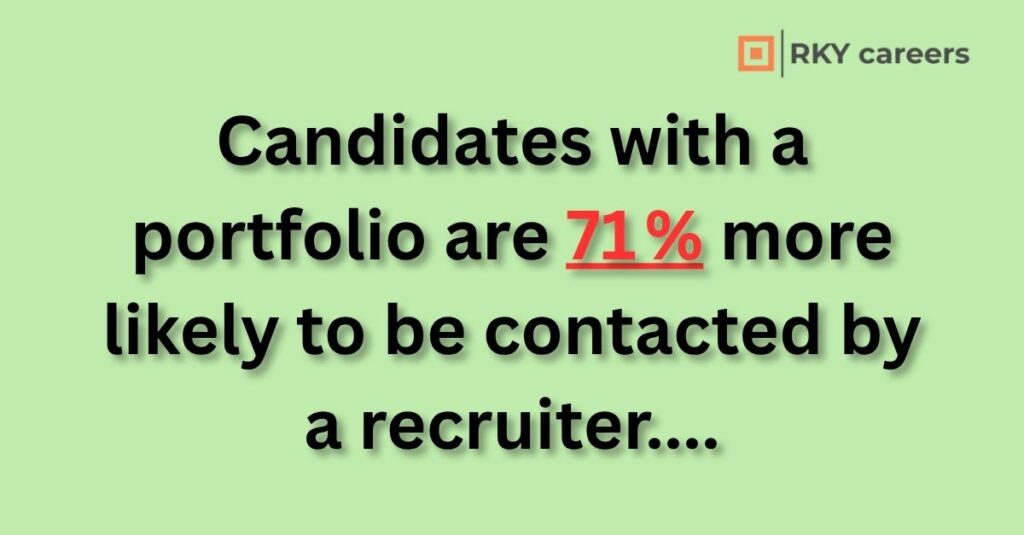
Read also:
Skills summary and tools you’ve mastered
Now here’s why these matters: employers love knowing what tools you’re already comfortable with. Your digital career portfolio should include a short section summarising both soft and hard skills.
This isn’t about listing every app you’ve ever touched. It’s about the ones that matter to the job. For example, a marketing role may require Google Analytics, while a design job might call for Adobe Suite.
Also include transferable skills like leadership or communication.
Don’t forget to show growth. If you’ve learned something new recently, add it!
This proves you’re continually improving. Group tools by category, like project management, creative tools, or analytics. A solid skill section makes your digital career portfolio easier to match with a job description.
How to Build a Portfolio for Different Careers
One-size-fits-all portfolios rarely work. When building a job ready portfolio, it pays to tailor your approach.
Need proof on the importance of building a portfoilio? Candidates with a portfolio are 71 % more likely to be contacted by a recruiter.
Different industries expect different types of work, formats, and emphasis. You wouldn’t show wireframes to a marketing recruiter or budget forecasts to a tech startup.
With a few tweaks, you can create multiple versions of your portfolio for different roles. Let’s walk through how to target your career path with confidence and clarity.
Job ready portfolio for tech roles
Tech portfolios are unique because they’re all about problem-solving. If you’re a developer, data analyst, or IT specialist, your entry-level job portfolio should include GitHub links, app demos, or coding challenges.
Show your work, don’t just say you’re a coder.
Use simple language to explain what the problem was, how you solved it, and what tools you used. For those new to tech, personal projects matter. Build something, test it, and document it. Your future boss wants to see your thinking process as much as the result.
The more you can demonstrate your tech skills, the easier it is to get the highest paying tech jobs.
Portfolio tips for creative professionals
Creatives need something special. Your work is visual, emotional, and often subjective.
So, your portfolio should reflect that. Whether you’re a designer, writer, or marketer, your pieces should not only look good but also demonstrate how the objectives are achieved.
Want to take it up a notch? Use storytelling.
Describe the client brief, your concept, your process, and the outcome.
Keep it easy to navigate, sleek in design, and focused on results. Add a splash of personality. It helps people remember you.
Most of all, link to your work on online portfolio websites. These platforms make it easy for potential employers to explore your style, without the clutter of email attachments.
Career changers: how to showcase transferable skills
Career changers have a hidden advantage: transferable skills.
Think leadership, problem-solving, communication, and adaptability. The trick is showing how your work experience applies now.
Let’s break it down: if you were a teacher switching to HR, show how managing classrooms is like managing people. 60% of job seekers tailor their portfolios to highlight relevant skills and experiences.
Start by mapping each skill to a new job function. Include side projects, volunteer work, or certifications to back your case.
This is where portfolio building for professionals gets exciting.
You’re showing growth, not gaps. Make it easy for them to connect the dots, and you’ll prove that your unique background is a benefit. Not a barrier.
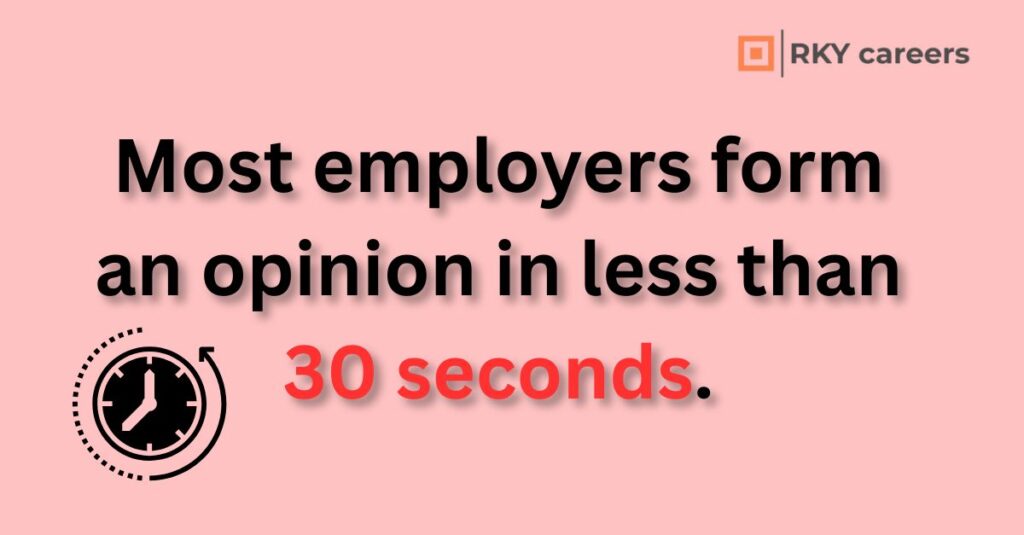
Read also:
Digital vs Physical Portfolios
Should your portfolio be online or printed?
The answer depends on your audience. In most cases, a digital career portfolio hosted on trusted online portfolio websites offers maximum flexibility and reach.
But here’s the deal: there are still times when a well-prepared physical portfolio seals the deal. Think interviews, networking events, or trade shows.
Knowing when and how to use both formats is a game-changer. So, let’s compare them and figure out what works best for you in real-life situations.
Need help landing interviews? Apply Buddy streamlines your job search.
From CV and LinkedIn optimisation to tailored cover letters and application submissions on your behalf.
You save time, reduce stress, and improve your chances with every submission.
Let the experts help you shine.
Best platforms to host your online portfolio
Let’s take a closer look at platforms that work.
If you’re building a job ready portfolio online, start with industry-specific platforms. For creatives, sites like Behance or Dribbble are perfect. Tech professionals often use GitHub, Devpost, or personal websites.
Want something general-purpose?
Try Wix, WordPress, or Squarespace. The secret is choosing a layout that’s easy to navigate and mobile-friendly.
What’s more, linking your portfolio for job interview use directly to LinkedIn can boost your credibility. Think of your portfolio as your 24/7 personal billboard.
Include a short intro, visuals, case studies, and contact information. And remember: no dead links, please. If something’s outdated, update or remove it.
When to bring a physical portfolio to interviews
You may wonder why printed portfolios still matter. They’re tactile, memorable, and personal. Bringing a clean, well-organised printout to your interview shows preparation and attention to detail.
If you’re applying in design, architecture, or education, this can be a big win.
A printed version often gets flipped through while you speak. It keeps the interviewer engaged. You can include resumes, job portfolio examples, recommendation letters, and printed case studies.
Use high-quality paper and avoid clutter.
A printed portfolio for job interview use also helps in panel interviews, where not everyone might have digital access.
It keeps you top of mind. When done right, a physical portfolio is more than just backup. It’s a powerful tool that makes your application complete and professional.
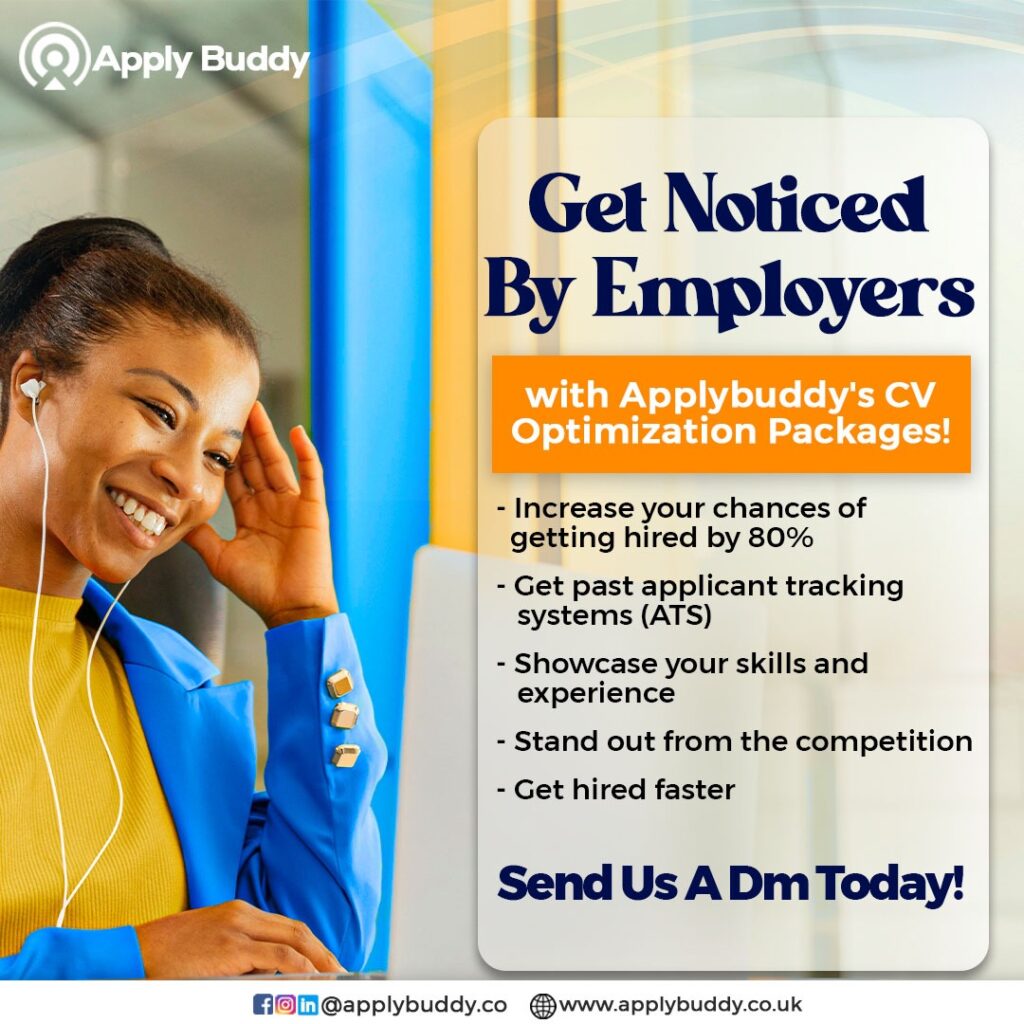
Tips for Creating an Impressive Portfolio
You’ve come this far, now let’s make your portfolio unforgettable.
When building a job ready portfolio, the final touch is polish. Your content needs to be relevant, recent, and relatable.
A great portfolio isn’t just about what you’ve done; it’s about how you present it. Let me walk you through three ways to make your portfolio more powerful and more persuasive.
Keep it updated and tailored
Stale portfolios are red flags. If your last update was three years ago, hiring managers will notice. To stay ahead, revisit your portfolio every 3 to 6 months.
Add new projects, remove outdated content, and tailor each version to the job. Your portfolio building for professionals should reflect who you are today, not who you were in the past. Customise your layout and case studies for each application.
A tailored portfolio shows you’re proactive and intentional. Keeping things fresh makes your building a job ready portfolio effort pay off every single time.
Read also:
Use storytelling to present your projects
This is where most people slip up. A portfolio filled with projects but no context leaves hiring managers guessing. What you need is a story.
Each project should answer three questions:
- What was the challenge?
- What did you do?
- What was the result?
That’s how storytelling transforms a portfolio from boring to brilliant. Here’s an example: Instead of “Designed a landing page,” try “Designed and launched a landing page that boosted signups by 20%.”
It’s clear, concise, and powerful. If you want to stand out during interviews, storytelling is the trick. It helps employers remember you and understand your value.
Add metrics and real-world results
Adding metrics gives weight to your work.
Think about it: saying you managed a campaign sounds okay. But saying you grew engagement by 40%? That grabs attention. So, when you’re building a job-ready portfolio, include as many results-driven details as possible.
Use before-and-after data, timelines, or user feedback. Just imagine a hiring manager seeing actual proof instead of vague claims. It changes everything.
Real results are what separate good from great. If you don’t have hard numbers, include client or peer feedback. Mentioning specific improvements, even qualitative ones, adds credibility.
And here’s the best part: metrics show that you think in terms of impact. That’s what employers are hiring for. So, whether you’re sharing job portfolio examples online or in person, always let results do the talking.
FAQs: Building a Job Ready Portfolio
Q: What should a job ready portfolio look like?
A job-ready portfolio should be clean, organised, and relevant to your target role. It must showcase your best work, highlight your skills, and include key documents like your CV and certifications. Make it easy to navigate, visually appealing, and tailored to the industry you’re applying to.
Q: Do I need a portfolio if I’m not in a creative field?
Yes, you do! Portfolios aren’t just for designers or artists. Whether you’re in tech, marketing, education, or business, a job ready portfolio shows your real-world impact. It helps recruiters understand your experience through case studies, projects, and achievements—even if your work isn’t traditionally “creative.”
Q: How many projects should I include in a job ready portfolio?
Aim for 3 to 5 strong, relevant projects. They should highlight the skills and tools most important to your industry. If you’re just starting, include personal or academic projects. Focus on quality, not quantity. Each project should demonstrate your value clearly and align with the job you want.
Q: What’s the best format for a digital portfolio?
The best digital career portfolio format is clean, fast-loading, and mobile-friendly. Use *online portfolio websites* like Wix, WordPress, or Notion to host your content. Organise it with tabs or sections for your projects, resume, testimonials, and skills. Make sure it’s easy to update and share via link.
